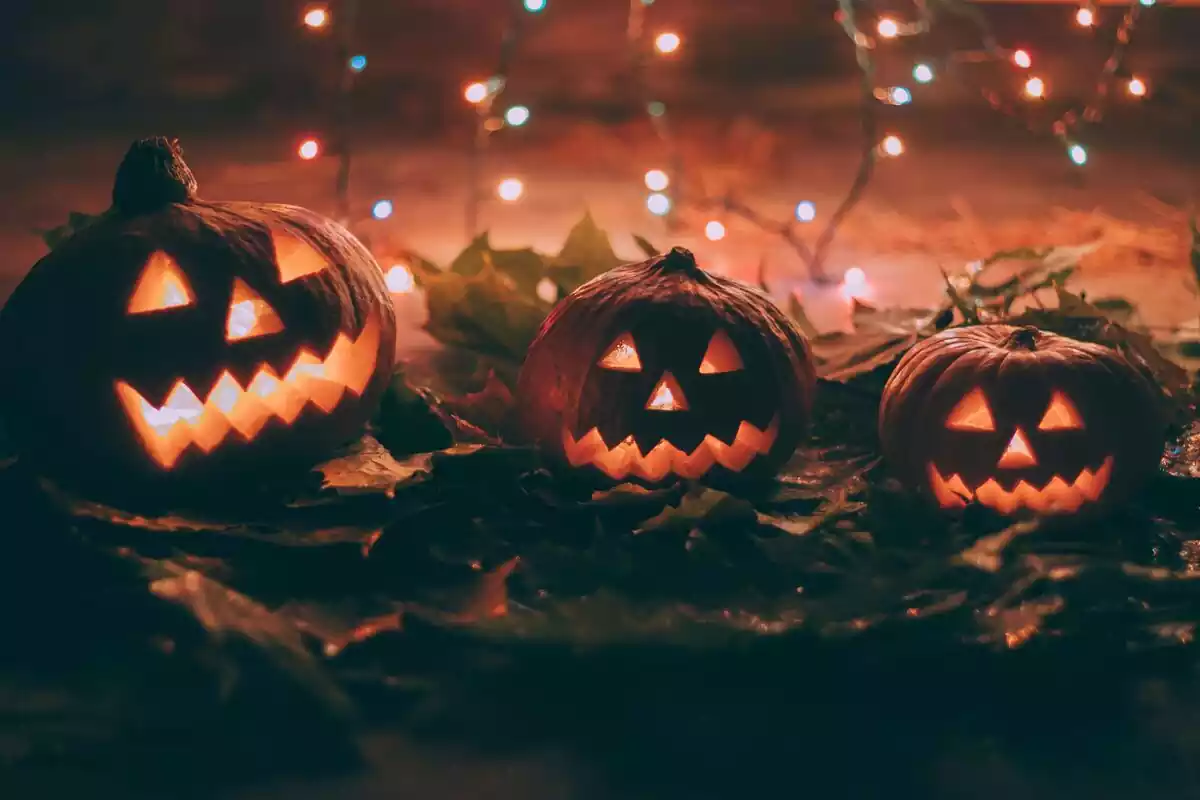Samhain means "Summer's end". Now begins the winter half of the year. This was the night, and all the first week of November, that once blazed with ritual fires. November 1st was the beginning of the year itself for the Celts. The feast of Samhain was the New Year's Eve. This night belongs neither to the past nor the present. Neither to this world nor the Other.
For the farmers, it was not possible to keep their entire herds alive though the winter. So, only the minimum breeding stock was maintained, and the rest was slaughtered. Some of these animals came to be cooked on the Samhain fires, and the rest were salted and preserved.
Crops, too, had to be gathered by October 31st. Anything that was not harvested was abandoned. This was done through fear of the Pooka (Puca), a nocturnal shape-changing hobgoblin who enjoyed bothering humans. The Pooka was said to spend Samhain night contaminating and destroying whatever remained. Its favorite disguise was the form of an ugly black horse.
Samhain's connection with death
Samhain was also said to be the start of the reign of The Lord of Misrule, which traditionally lasts from now 'till Candlemas. This figure had serious undertones. With the coming of winter, the old agriculturists looked chaos in the face. Many of them didn't survive the winters. By challenging the Lord of Misrule, and laughing with it, they proclaimed their faith that the God and Goddess cannot allow them to be swept away.
People feasted wholeheartedly, for they knew it might be the last proper meal they would get that winter. Even still, with a hard winter to face, human sacrifice was a grim and serious affair. Criminals were saved up for this purpose. Although, at one time, the aging king was called for sacrifice. Whatever the case, there is no doubt that the sacrifices were done by fire.

At this time of the year, the Veil between the worlds is very thin. The door to the Other world lies open, and neither spirit nor human need a password to go through. Spirits of the dead are said to seek the warmth of the Samhain fire and communication with the living. Households would set meals for the wandering spirits. Samhain is the time for the old and dying, and the new still unborn. The Samhain ritual centers around helping the dead to reincarnate through the Great Mother.
Witches used lanterns made out of pumpkins and turnips to cover up their meetings at this time. The hollowed out pumpkin, with a face cut on it, was prepared with a candle inside to shine through. These were then slung from poles, and in the distance would look like a procession of goblins. Turnips were made up in the same manner to provide smaller pixie faces. These served a double purpose. To light the path to the woodlands, and to frighten away the curious.
Many kinds of divination are associated with Samhain. These are mostly directed at discovering the person one is fated to marry, hence they were usually practiced by younger people. So, Samhain was on one hand, a time of sacrifice, communion with the dead and divination, and on the other hand an uninhibited feast of eating and drinking in the face of the closing dark.
Of all the eight Sabbaths, some feel this is the one in which the Great Rite should be stressed. Be it performed symbolically or for real. The thought process is that because Samhain is so intimately concerned with death, and the dead, it should conclude with a solemn reaffirmation of life. Others prefer not to dilute the solemnity of the Sabbat in that way. It is ultimately the individual practitioner’s choice.

